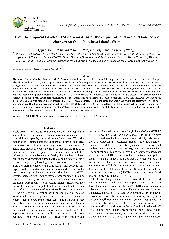摘要
The drastic change in land use/land cover (LULC) associated with urbanization is a powerful driving force in local climate and environment changes. The urban heat island (UHI) effect, a phenomenon that air and surface temperatures are higher in urban areas than in rural areas, is closely related to changes in LULC. In this study, remote sensing techniques were applied to derive information on LULC and land surface temperature (LST). The multi-temporal Landsat-5 Thematic Mapper (TM) images of 1987, 1996 and 2007 were used to detect the LULC changes and analyze their impacts on LST distributions and the UHI patterns. Results revealed that Wuhan has experienced an ongoing and accelerated urbanization from 1987 to 2007 with the urban built-up area increasing by nearly 303.14%. However, the UHI intensity was found to not always present a linear trend with the expansion of built-up area. It was partly influenced by the seasonal land cover variation associated with agricultural activities. For each land cover, the mean LST and area proportion of different LST classes were counted. Results indicated that water and forest had relatively lower surface temperatures and built-up and bare land areas had higher ones. Only 0.01% to 1.60% of the water areas were identified as heat islands, while sub-high and high temperatures were recorded in more than 90% of the built-up areas and nearly 80% of the bare land areas. These findings can provide useful information for urban planning, greening design and environmental management.
